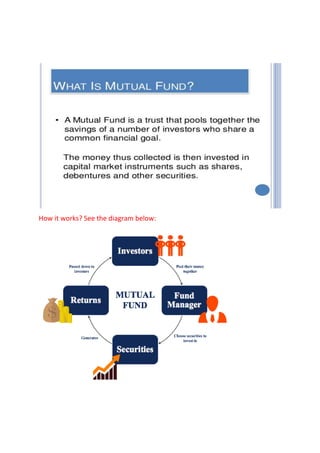The structure of mutual funds in India is three-tiered, with a sponsor establishing a fund, trustees overseeing operations, and an asset management company managing investments. A sponsor approaches SEBI for permission to set up a fund as a public trust. Trustees monitor activities and compliance, while asset management companies launch schemes, manage funds, and provide investor services with help from other entities. Custodians safekeep fund securities and registrars provide operational support.






